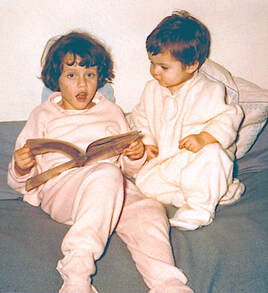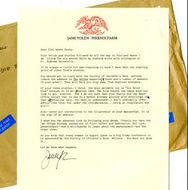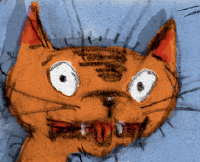|
"Welcome back!" the sign-in screen says as I begin to update the W.I.P. page of my site. It's been a while. A worldwide virus. A worldwide civil rights protest. A mourning in our family among so many others'. And a time to struggle forward. So the little greeting stretches a smile across my face at the same time as my eyes well up.
Silly, I know. But crying's good. It staves off depression and fuels desire for change, despite the limits of a world compressed to my mom's and my homes, phones, books, screens, walks and grocery stores. Donating what I can to causes, grieving/healing with my family, and personal work are things I can do. So. Aside from weeding and cleaning, I'm writing, sketching, painting, scanning, designing, or researching a little, every day. Anything to move forward even just a bit. I hope you are finding your way through this time, too.
2 Comments
Working on a new style for an early graphic novel has been liberating. And frightening. After all, this style seems limited to the project. But none of my old methods fit for it, so . . ..
This long initial stage already had me feeling vulnerable, but knowing the character and not being able to catch his/her/their face was completely unsettling. Should I submit the dummy and say, well, someone else should illustrate the book? There are so few words, the manuscript would be mostly illustration notes to show what was happening. No, who would want to trust that? I’m an author-illustrator at heart, thinking in scenes. All my stories for young children are spare with the words. Character shown visually is a big part of how I write. When you do that, words need to work extra hard with strong support from the pictures. It needed to be me. Turned out, it was a good idea to complete the 64-page dummy. It gave me a certainty about the feel and pacing of its three stories. It also clarified what I needed in the missing face (which looks suspiciously like a certain rescue cat.)  Here’s part of a sketchbook page with a possible good one. I like the innocence and playfulness plus the potential to be very catlike—which is to say at the very least a teensy bit troublemaker-ish. The main cat’s face is starting to feel right. I’m going to try it out and see if it works.
 Sometimes I wish I studied cartooning along with illustration and graphic design. I would already be used to something like this new style I’m attempting. Maybe then I wouldn’t have such pesky difficulties to struggle over. But for my early graphic novel, I’m aspiring to a slightly cartoony style for younger children—different from the odd not-quite-cartoony style used long ago for Boston Magazine and my regular not-quite-realistic children’s illustration styles. Going for a specific level of grunge and bad drawing with over-enthusiastic claws and tiny fangs is chancey stuff. It tends to be a difficult leap from 22 years of illustrating children's educational, trade nonfiction, and magazines . . . mostly done on tight schedules . . .. Actually, practically everything . . . except my own illustrations and writing . . . was done on tight schedules . . .. Yep, there it is. I’m illusplaining. Making excuses. In case this doesn’t pan out. But a funkier look seems to fit the project. For now, I’m going with a claim of “outsider’s style.” Perhaps it will be new and interesting to those jaded by good cartooning. Got to try, anyway.  Last year, five minutes of painting/drawing, using the computer, or writing made my hand go completely numb. I had to have carpal tunnel surgery. It was simple surgery with a painful recovery—in two ways: 1) Pain-pain. Lots of nerves in a hand. 2) Lots of angst. The whole year before, I’d gradually had to reduce work, until I was only doing small projects with roomy deadlines for existing clients. So by the end of that year, I’d pretty much lost my “hand” (hand-eye coordination) and finally gave in to the idea of surgery. After surgery . . .. Good: Absolutely no numbness. Bad: Absolutely no numbness. Good: Eventually, I could draw and paint again. Bad: Needed lots of practice to get back to my skill level. My mom and I had been going to weekly life drawing sessions. Before the surgery, I would draw five minutes, shake my hand, rest it five minutes, then draw again. After surgery, driving the 16.2 miles each way was the accomplishment. But after a month of physical therapy, I was drawing and painting again, getting used to my “new” weak, shaky and uncoordinated-but-numb-free hand. I’m still going to life drawing. Working in my studio now, too. Getting my “hand” back—both the use of it and hand-eye coordination. I’m working on character designs for a silly new story and just finished a week of writing, rewriting, re-rewriting query letters and a synopsis for a #PitchWars entry. There are countless worse situations that others deal with daily, I know. This is just a little plug for the good kind of stubbornness that helps a little with all sorts of trouble. Wishing you plenty of stubbornness, as needed, too, Long ago at UCONN, I had the privilege to attend Francelia Butler's Children's Literature class — and the luck to raise my hand before she was done asking if anyone wanted to drive Maurice Sendak from his home to hers so they could attend a conference together.
Mr. Sendak was lovely, gave me a tour of his studio, and signed my five-year-old copy of Where the Wild Things Are. I was blown away by the honor, but knew he was in for a "bad surprise." His ride was an elderly Chevy with two colors of primer and Bondo comprising most of its outside and no heat on the inside, due to a mouse living in one of the heater ducts. He managed to hide his dismay after one shocked second. Once he realized, 1) the engine was in working order, and, 2) he'd never get to the conference in time if he refused to get in, he consigned his fate into my hands. He sat, shrugged under the quilt I'd brought for his comfort (early spring in Connecticut, snow still in the tree shadows) and proceeded to chat amiably the whole two hours of travel time. I'll never forget how open and hilarious he was. It was my first close-up experience with how wonderful children's book authors/illustrators could be. Maurice Sendak died May 8, 2012, of a stroke. While we still have the legacy of his groundbreaking work and its effect on children's literature, I miss his truthfulness.  When I was young, my books were well loved—sometimes doing double duty in block towers, other times, as a source of past-bedtime sneak-reading under the covers, lit by the glow-in-the-dark eye of my owl puppet, one word at a time. When I was old enough to write stories, they were mighty similar to those lit by owl light. But that changed. After I began to write about things I noticed on my own, my seaweed poem somehow ended up in a gallery window next to my mom's artwork. It was the first time unfamiliar people could read what I wrote. I still remember that thrill—plus the unexpected feeling of vulnerability. Writing is like that. Actually all creativity is—whether it’s art, dance, music, science, math—you need to be both brave and vulnerable to create something new. Otherwise, you stick with what’s safe and you (and others around you) eventually leave or go nuts with boredom.  Kindness and Good Advice Over twenty years ago, after reading Jane Yolen's Touch Magic, I wrote her an enthusiastic fan letter, enclosed some enthusiastic picture book manuscripts, and sent it to her publisher with a request to forward it. Amazingly, they did. Even more amazingly, Ms. Yolen wrote back . . . from Scotland . . . diplomatically suggesting that I might like to join the Society of Children's Book Writers and Illustrators. I did, and still am a member. The SCBWI taught me how much I didn't know about writing and illustrating for children, how badly I wanted to learn, and inspired me to share what knowledge I had. It provided a whole world of encouragement for staying open, vulnerable—creative! I'm shy in crowds but co-created/ran three SCBWI events with author/illustrator Carol Heyer. I even spoke in front of nearly 200 people at a Writers' Day conference without crying. My illustrations were published with the help of longtime rep (now retired) Ann Remen-Willis: five non-fiction trade books, countless educational books, and many illustrations in Ladybug, Cricket, and Highlights magazines. So, Bravery Okay, children’s illustration—check! I want to do more, but bravery's already there. Writing’s been my last holdout. Fear and necessity squeezed writing into the spaces between freelance work and family. Lots was written, but almost no submitting. Just two children's poems published in Ladybug. It’s taken decades of reading, experimenting, and revising to write at what I’m hoping is at a professional level in a way that resonates with children. I love writing, even the frustrating parts. It unscrambles my brain, makes me laugh, and fills my heart. Now that I’m semi-retired, I get to write. And submit. I’m no longer closeted. I'm coming out. Hopefully, it won’t take anyone as long as it took me. If you’re wondering, please know it doesn't matter who you are or what your initial skills are. Keep at it. Keep learning. Read new books, Read aloud. Keep being as brave as possible. Join SCBWI. Surround yourself with encouraging, funny, and open people. Listen to your own inner voice. Listen to real children. Volunteer at a school like I did, or do your own bit with sharing and be ready for surprises, chance, and change. It's never boring and it just might be what fills your heart. |
Works in Progress:
|




 RSS Feed
RSS Feed